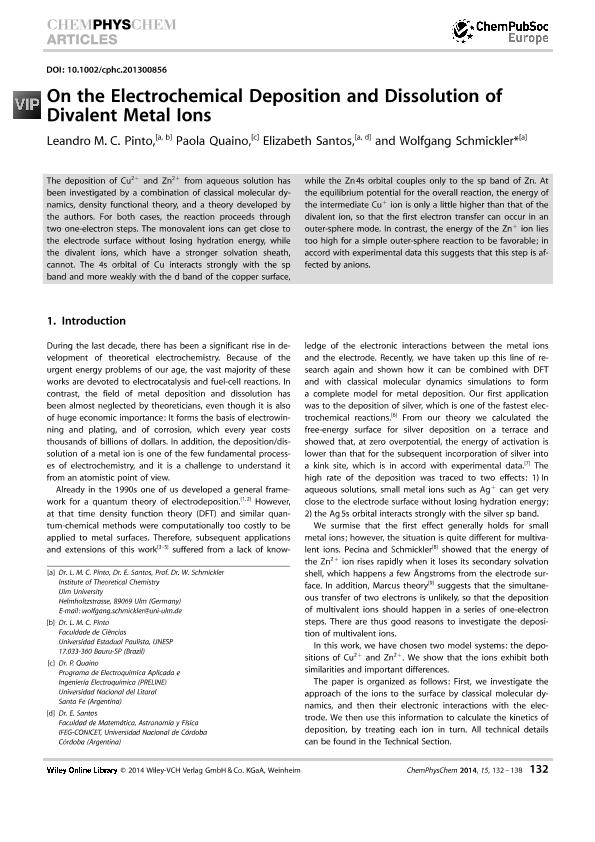Artículo
On the Electrochemical Deposition and Dissolution of Divalent Metal Ions
Fecha de publicación:
01/2014
Editorial:
Wiley VCH Verlag
Revista:
Chemphyschem
ISSN:
1439-4235
Idioma:
Inglés
Tipo de recurso:
Artículo publicado
Clasificación temática:
Resumen
The deposition of Cu²+ and Zn²+ from aqueous solution has been investigated by a combination of classical molecular dynamics, density functional theory, and a theory developed by the authors. For both cases, the reaction proceeds through two one-electron steps. The monovalent ions can get close to the electrode surface without losing hydration energy, while the divalent ions, which have a stronger solvation sheath, cannot. The 4s orbital of Cu interacts strongly with the sp band and more weakly with the d band of the copper surface, while the Zn 4s orbital couples only to the sp band of Zn. At the equilibrium potential for the overall reaction, the energy of the intermediate Cu+ ion is only a little higher than that of the divalent ion, so that the first electron transfer can occur in an outer-sphere mode. In contrast, the energy of the Zn+ ion lies too high for a simple outer-sphere reaction to be favorable; in accord with experimental data this suggests that this step is affected by anions.
Palabras clave:
Electrochemical Deposition
,
Dissolution
,
Divalent Metal Ions
Archivos asociados
Licencia
Identificadores
Colecciones
Articulos(CCT - SANTA FE)
Articulos de CTRO.CIENTIFICO TECNOL.CONICET - SANTA FE
Articulos de CTRO.CIENTIFICO TECNOL.CONICET - SANTA FE
Articulos(IFEG)
Articulos de INST.DE FISICA ENRIQUE GAVIOLA
Articulos de INST.DE FISICA ENRIQUE GAVIOLA
Citación
Santos, Elizabeth del Carmen; Quaino, Paola Monica; Pinto, Leandro M. C.; Schmickler, Wolfgang; On the Electrochemical Deposition and Dissolution of Divalent Metal Ions; Wiley VCH Verlag; Chemphyschem; 15; 1; 1-2014; 132-138
Compartir
Altmétricas




